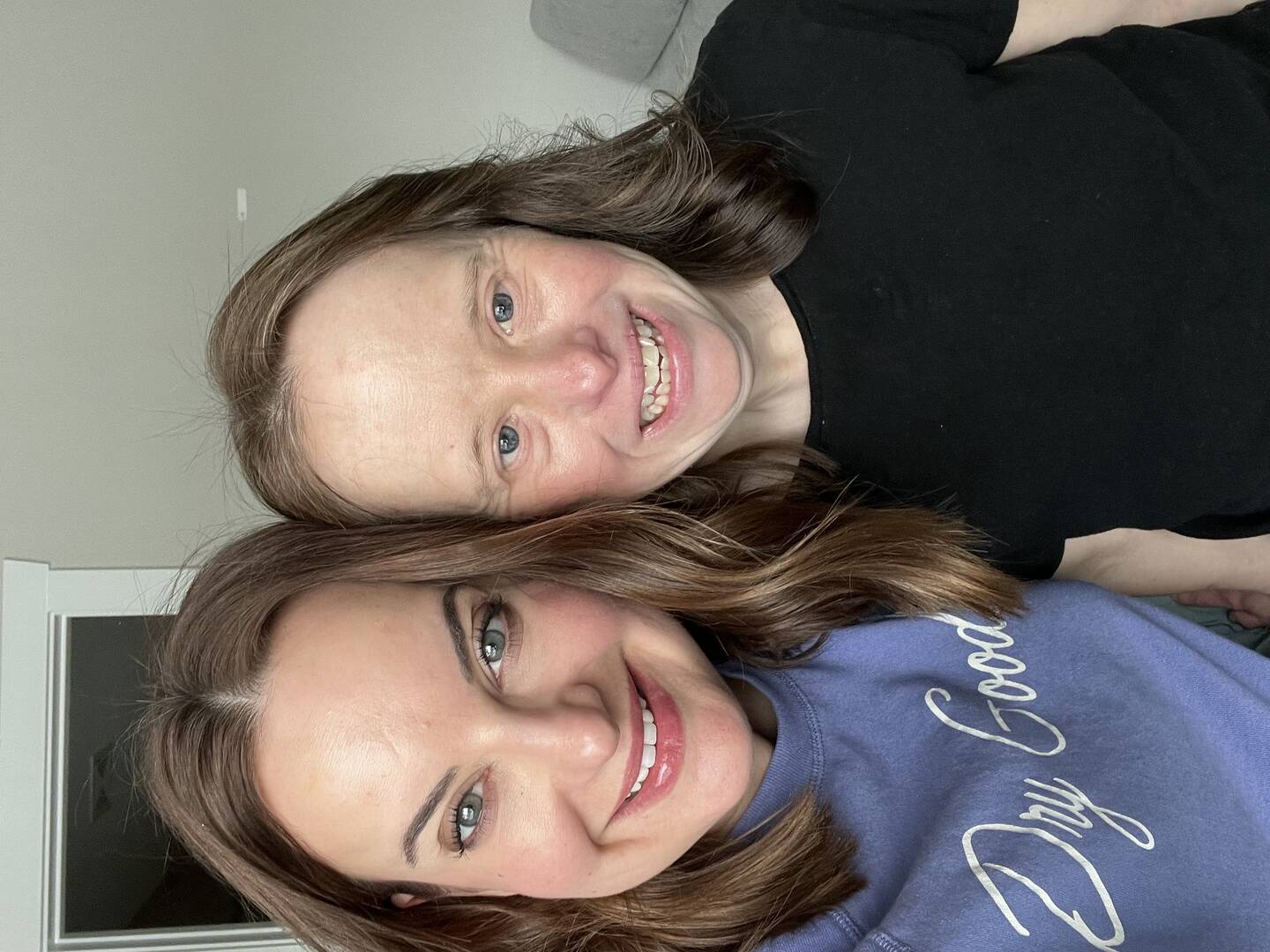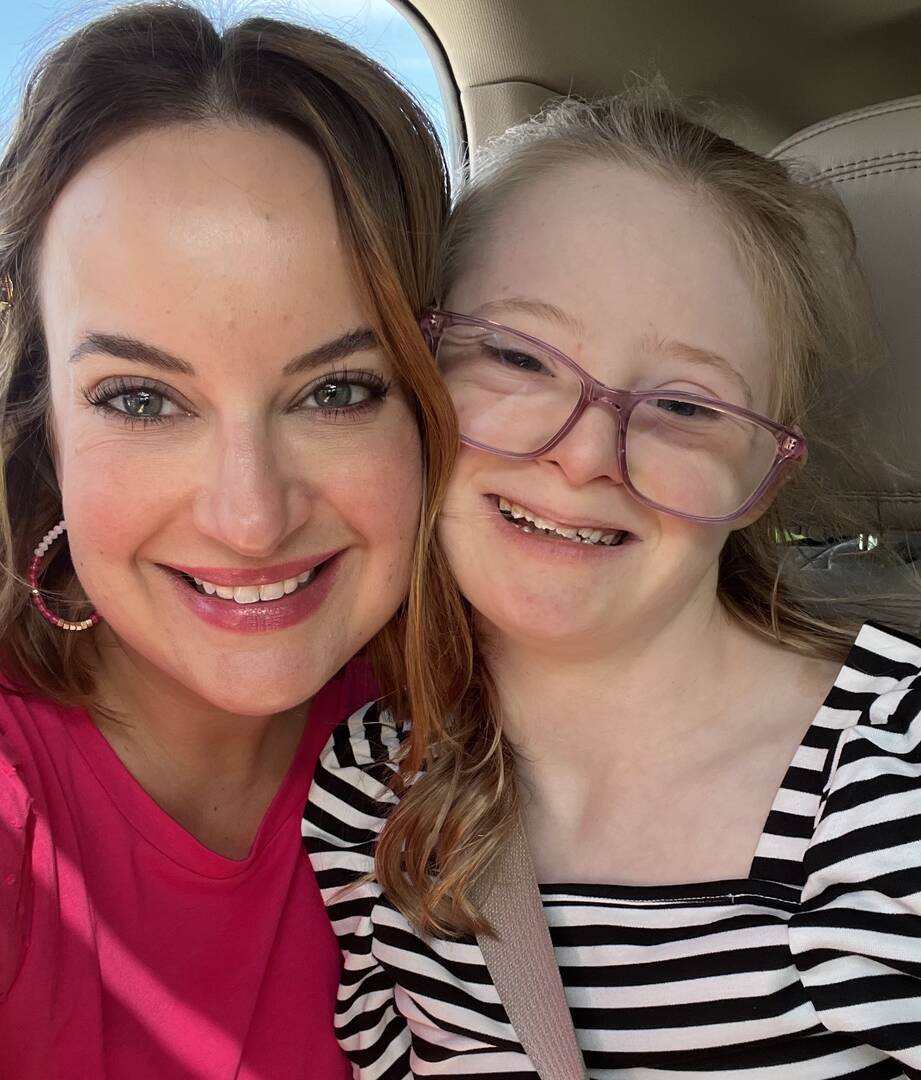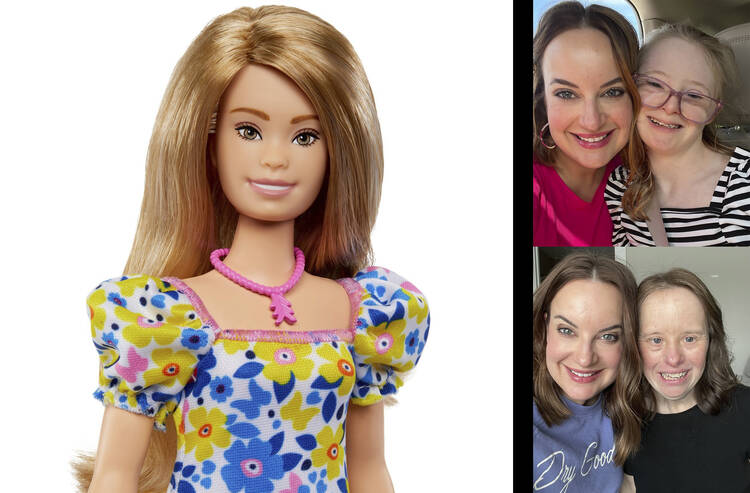Recently, my husband repurposed a piece of plastic, some string and a scrap of fabric to make a therapy swing for my daughter’s Barbie dolls. My daughter Josie has Down syndrome and attends a therapy center where she works on her speech and her fine and gross motor skills. She loves being pushed on a swing there by her favorite therapist, Ms. Lani. So it only makes sense that when my daughter plays with her Barbie dolls, she re-enacts her favorite moments at the therapy center with her new therapy swing and an Anna doll (from the film “Frozen”) representing Ms. Lani—Anna and Lani share the same ginger hair color. Wouldn’t it be wonderful if the doll my daughter uses to represent herself could reflect her own unique features, including a shorter stature, a flat nasal bridge and beautiful almond-shaped eyes?
This will soon be possible because Mattel has released a new Barbie doll that has Down syndrome. Mattel worked with the National Down Syndrome Society to ensure that the new doll would accurately represent the members of this community. “It was an honor working with Barbie on the Barbie doll with Down syndrome,” Kandi Pickard, the president and C.E.O. of N.D.S.S., said. “This means so much for our community, who for the first time, can play with a Barbie doll that looks like them.”
Our family is unique in that it encompasses two generations of Down syndrome. My sister, Leanne, was born in 1977. She required a life-saving surgery to survive. My parents were offered the option to forgo the surgery, forget about this ailing child and try again for a healthy child. As a devout Catholic, my mother rejected this notion. This was her baby, made in God’s image. Leanne was a blessing—one for whom she was incredibly grateful and committed to nurturing with every fiber of her being.
Wouldn’t it be wonderful if the doll my daughter uses to represent herself could reflect her own unique features, including a shorter stature, a flat nasal bridge and beautiful almond-shaped eyes?
Growing up with my sister was such a positive experience for me that when it came time for me to start a family, I truly wanted to adopt a baby with Down syndrome. That dream was realized in 2010. The 33-year age difference between my sister and my daughter brought many beneficial changes in resources and attitudes toward the Down syndrome population. I’ll never forget my mom marveling at how much more access my daughter had to therapists, adaptive equipment, educators and medical professionals who were committed to promoting her development. When my daughter was fitted with her first pair of orthotics, braces designed to correct her pronation and stabilize her foot and ankle, my mom reminisced about how they attempted to achieve the same result with Leanne by having her sleep in high-top shoes tied together.

Orthotics are an accessory featured on the new Barbie with Down syndrome, another testimony to the progress achieved within the last 30 years. What was not accessible to my sister then is now present on the Barbie. The doll’s dress features butterflies in yellow and blue print—symbols and colors associated with Down syndrome awareness. The doll wears a necklace with a pendant featuring three chevrons, designed to symbolize the three copies of the 21st chromosome that causes Down syndrome, hence its name, Trisomy 21.
My mom passed away in 2018, but I’m sure she would marvel at the idea that Barbie, a cultural icon owned by 92 percent of American girls, has added a doll with Down syndrome to its 2023 Fashionista line.
Historically, Barbie has generated considerable controversy for propagating unrealistic beauty standards, but Mattel has come a long way and now strives to be the most inclusive doll line on the market. According to the United Nations, individuals with disabilities represent the world’s largest minority group. Barbie has already introduced dolls with hearing aids, prosthetic limbs and wheelchairs in order to reflect and celebrate the diversity of the human condition.
As parents, we are called to raise our children in the faith that emphasizes the sanctity of human life and the dignity of all of God’s children. Our interactions with individuals with disabilities should be an affirmation of our faith. We are all one flock serving a single shepherd. After all, Jesus himself sought the companionship of people who, for one reason or another, were forced to live on the fringe of society (cf. Mk 7:37). These he made the special object of his attention, declaring that the last would be first and that the humble would be exalted in his Father’s kingdom.
By supplying our children with toys that portray diversity, we are sending a critical message, one that encourages our children to emulate the way Christ lived.
While my daughter owning a doll that reflects her physical attributes is important, it is even more important that neuro-typically developing children are provided with dolls that do not resemble them. By supplying our children with toys that portray diversity, we are sending a critical message, one that surpasses normalizing marginalized groups through pretend play. This message is much more profound: It encourages our children to emulate the way Christ lived. While the rest of society shunned people with disabilities, Jesus ministered to them. He welcomed them with compassion and love. “When persons with disabilities are embraced and welcomed, and invited to participate fully in all aspects of parish and community life, the Body of Christ is more complete,” the U.S.C.C.B.’s Guidelines for the Celebration of Sacraments with Persons with Disabilities states.

But it is one thing for me to talk about how happy I am that inclusion like this is happening—my daughter and my sister have both heard about the doll, too. When I asked Josie what she thought about the new Barbie, in true middle-schooler fashion, she said, “I think the Down syndrome Barbie is ‘slay.’ And beautiful.”
I also talked about the new Barbie with my sister, Leanne, and she admitted that she didn’t have any dolls that looked like her when she was young. She thinks it’s “great” that Mattel is introducing a doll that “is the same as me and JoJo.” Leanne is a devout Catholic, and she emphasized that Jesus considers all people “blessings” and that everyone is worthy of “love and respect.”
According to Mattel’s website, “Barbie recognizes the importance of representation and is committed to doing the work to inspire the next generation.” Mattel’s commitment to becoming more inclusive by offering dolls that celebrate differences is a valuable opportunity for parents to affirm the dignity of all human beings. The Pastoral Statement on Persons with Disabilities asserts that church leaders and members are called to offer acceptance and appreciation to individuals with disabilities. “They bring with them a special insight into the meaning of life; they live, more than the rest of us perhaps, in the shadow of the cross. And out of their experience they forge virtues like courage, patience, perseverance, compassion, and sensitivity that should serve as an inspiration for all Christians.”








